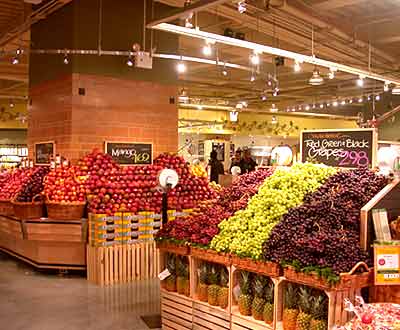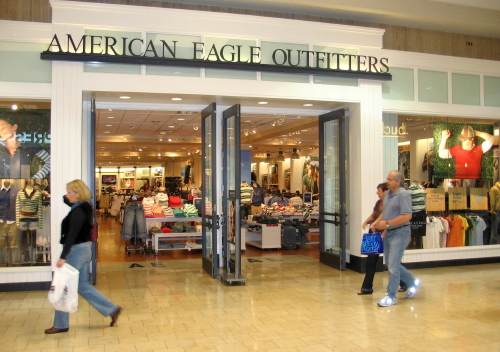Retail Market Research in China
China’s Retail Market is booming. Customer needs are changing. Uncover insights and opportunities from Retail Market Research in China.
China’s Retail Market is booming. Customer needs are changing. Uncover insights and opportunities from Retail Market Research in China.
Mobile Retail is transforming the way people live, buy and thrive.
Discover new insights on attracting and retaining Millennials in the Workplace.
Discover how to become more profitable.
Discover how we can help your organization grow in Southeast Asia.
Learn about Navigating Cultural Differences in Global Market Research Projects.
Generation Y are rising on the world stage, impacting business, society and economics. Discover how millennials are impacting your business.
Opinion/Humor Piece: Much debate has ensued over the question of how digital media have altered the fundamentals of communication. Sure, digital platforms make it quick and easy to reach a large audience in an instant, but have texting, Tweeting, and Facebooking sapped all the subtly and nuance from our communication? It seems this is still … Read more
K-pop is a growing cultural export from Korea. SIS works with Korean culture exporters to build Global Brands.
By Rueya Ceylan and Sonja Sobota, Research Analysts
For successful Christmas Marketing the marketer has to understand consumer habits of holiday shopping and new trends. It is crucial to analyze the customer’s need and the tools used for holiday shopping. With the internet already being a huge platform for today’s generation, online shopping has been taken to new stages.
The holiday shopping season starts with the usual Black Friday hype. Manufacturers claim to have the newest items for the lowest prices. The sale is announced in the newspapers, TV and radio stations.
Millions of shoppers storm into the malls and stores hoping to get a great bargain for the Christmas season. As a result of the retail trade group, over 200 million consumers visited stores and websites over the Black Friday weekend. Last year’s results came up to 195 million.
Following the “Great Recession” of 2009, consumers are living in the “new normal”. Here are some of the changes facing consumers and retailers in 2010.
Thriftiness
Consumers are spending less. Coupons, private labeled goods, loyalty rewards cards, products in bulk, self-service and discount stores are increasingly part of the consumer’s protection against financial worries. Deflation in prices is a fear among retailers.
Consumers are both more educated and risk-averse when purchasing products. They use product rating sites to read other users’ product ratings and to compare prices and functionality.
American consumers increasingly seek to enhance their wellness without the help of a medical professional. Organic retail stores have become more mainstream, despite the obesity epidemic.
Redefined consumerism and values
American attitudes toward ravenous consumerism has changed. According to one survey, 75% of respondents mentioned they would rather spend more time with family than make more money.
Consumers are increasingly pressured to pay off debt and consume only necessary products, instead of continue past consumption habits.
Increasingly, consumers want to know about product sustainability and the origination of goods. Locally produced goods are increasingly becoming a fixture in supermarkets.
Brick-and-Mortar not dying for all retailers
While brick-and-mortar shopping malls and video stores have declined, retail banks and specialty stores (e.g. Apple store and Sony Store) are still relevant to consumers. Online shopping and local retailers are gaining more importance.
New consumption trends are emerging, such as online grocery shopping in urban areas.
Retailers finding new ways to be relevant to consumers
Sophisticated digital signage is becoming a way for retailers to promote deals and track the effectiveness of in-store point of purchase advertising and messaging.
“Nostalgia marketing” is a rising trend, particularly with products targeted toward Baby Boomers. Marketers are creating goods emphasizing emotional connections to meaningful symbols.
 In a new survey by Experience, Generation Y is unclear about the necessary skills for success in their careers. The survey explored the ideas of both employers and Generation Y. Experience found that 54% of Gen Y respondents were unclear about exactly the skills considered desirable by employers. But a large number of Gen Y respondents felt that they were not lacking necessary skills desired by employers. This optimism contrasted with the reality of employers believing Generation Y was deficient in important skills. Employers can take confidence in the study’s findining that 97% of Gen Y respondents would take action to rectify their skill deficit.
In a new survey by Experience, Generation Y is unclear about the necessary skills for success in their careers. The survey explored the ideas of both employers and Generation Y. Experience found that 54% of Gen Y respondents were unclear about exactly the skills considered desirable by employers. But a large number of Gen Y respondents felt that they were not lacking necessary skills desired by employers. This optimism contrasted with the reality of employers believing Generation Y was deficient in important skills. Employers can take confidence in the study’s findining that 97% of Gen Y respondents would take action to rectify their skill deficit.
 Amidst the growing food prices, many American consumers are still leaning towards natural and organic foods that are pesticide-free, hormone-free and non-GMO. The cost-conscious American consumer is putting a premium on practicing healthier eating habits, as certified organic growers begin to develop specialized niches and loyal customer base in the market.
Amidst the growing food prices, many American consumers are still leaning towards natural and organic foods that are pesticide-free, hormone-free and non-GMO. The cost-conscious American consumer is putting a premium on practicing healthier eating habits, as certified organic growers begin to develop specialized niches and loyal customer base in the market.
The natural and organic food and beverage market is reshaping the US consumer lifestyle, with a wide range of products available in every retail outlet in the country. US consumers are also increasingly becoming health savvy consumers with preference on purchasing natural alternatives to processed foods and other mainstream offerings.
 The growing financial crisis in the US is taking its toll on consumer confidence in the economy with real consumer spending falling at an annual rate of 3.1% in the third quarter of 2008 and real spending on durable goods falling at an annual rate of 14%. American consumers have long been living beyond their means; however, this lifestyle is expected to end as consumers began to focus on saving their money. In the mid-1980s Americans saved about 10% of their income. Lately, however, the savings rate has generally been below two percent, sometimes registering negative percentages; and consumer debt rose to 98 percent of G.D.P., twice its level a quarter-century ago.
The growing financial crisis in the US is taking its toll on consumer confidence in the economy with real consumer spending falling at an annual rate of 3.1% in the third quarter of 2008 and real spending on durable goods falling at an annual rate of 14%. American consumers have long been living beyond their means; however, this lifestyle is expected to end as consumers began to focus on saving their money. In the mid-1980s Americans saved about 10% of their income. Lately, however, the savings rate has generally been below two percent, sometimes registering negative percentages; and consumer debt rose to 98 percent of G.D.P., twice its level a quarter-century ago.
The current financial crisis has influenced the changes in American consumer behavior. The “new” American consumer can be characterized as:
 Generation Y is one of the hardest hit generations in the recession. Surprisingly, the generation is optimistic. According to a recent survey by Experience, 50% of US Gen Y respondents believe that their job prospects are optimistic. Experience’s Survey also shows that 25% believe that the media are presenting an excessively negative job outlook. Only a third believe that their career development will suffer due to lack of opportunity. Surprisingly, only about 30% of Gen Y feels they should work longer hours and take on more projects for job security.
Generation Y is one of the hardest hit generations in the recession. Surprisingly, the generation is optimistic. According to a recent survey by Experience, 50% of US Gen Y respondents believe that their job prospects are optimistic. Experience’s Survey also shows that 25% believe that the media are presenting an excessively negative job outlook. Only a third believe that their career development will suffer due to lack of opportunity. Surprisingly, only about 30% of Gen Y feels they should work longer hours and take on more projects for job security.
What industries are Gen Y young people interested in?